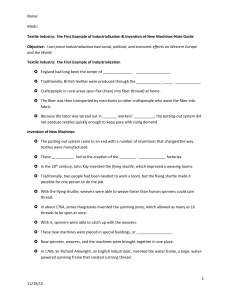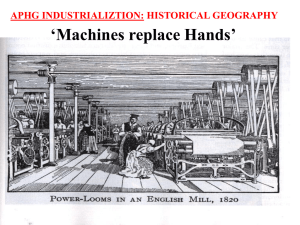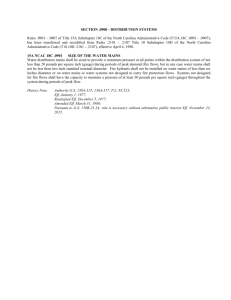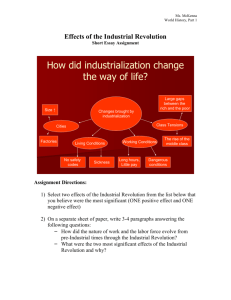File
advertisement
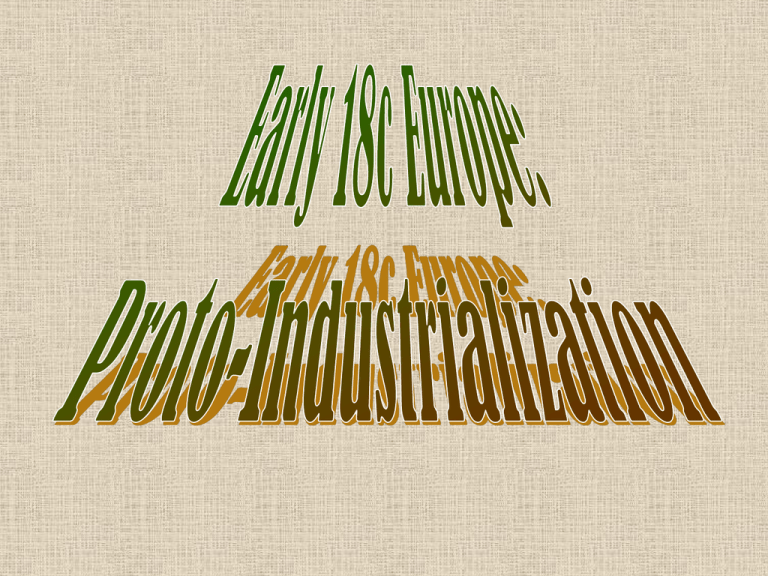
17c European Agrarianism Feudal Common Field System Cereal Crops in 18c Europe New Crops • Turnips – good for eating? • Helped development of crop rotation • New science - analysis of yields, dates etc. • Thomas Coke rudimentary fertilizers and field grasses. • Parishes controlled all planting in open areas • Landowners wanted change ENCLOSE THE LAND “Enclosed” Fields Bakewell and Selective Breeding • Again Science • By taking the biggest and best animals produced bigger and better offspring. • In 85 years the average cow for slaughter went from 370lbs to 840lbs Population Density: 18c Europe 18c Population Growth Rate Small Town “Farmer’s Markets” c The Village School (17 ) Country People Playing a Ball Game Supplemental Income Cottage Industries: “Putting-Out” System” The “Putting-Out” System Advantages of the Putting-Out System 1. Peasants could supplement their agricultural incomes. Take advantage of winter months when farming was impossible. 2. Merchants could avoid the higher wages and often demanding regulations of urban labor. Easier to reduce the number of workers when the economy was bad. 3. Merchants could acquire capital, which would later play a part in funding industrialization itself. Peasants acquired future skills. 4. Young people could start separate households earlier, thus contributing to population growth. Disadvantage of the Putting-Out System When demand rose [which it did in the 18c] this system proved inefficient. Merchant-capitalists found it difficult to induce peasant-workers to increase their output. This dilemma eventually led to the factory system All the workers were concentrated in one place under the supervision of a manager. Water or steam power could easily be applied there. “Apprentices at Their Looms” William Hogarth, 1687 Por • Lots of natural harbors ts • Established merchant navy 18c British Port The Growth of England’s Foreign Trade in the 18c British Raw Materials 18c English “Nouveau Riche”: The Capitalist Entrepreneur The First Factories • Growing demand for textiles leads to the creation of the first large factories • Putting out system can’t keep up with demand The First Factories • • • • • Flying Shuttle Hargreaves’s Spinning Jenny and Arkwright’s water frame speed up spinning Cotton spinning gradually moved to factories Cotton goods cheaper and more available Wages of weavers rise quick, workers move to become weavers Wedgewood • Beginnings of factories for manufacture • Upgrade crockery more available • Social reformer (more later) • High end collectible pieces th 250 For their anniversary (2009), Wedgewood produced a series of collectibles including this$950 10.25” vase – Priced 0

